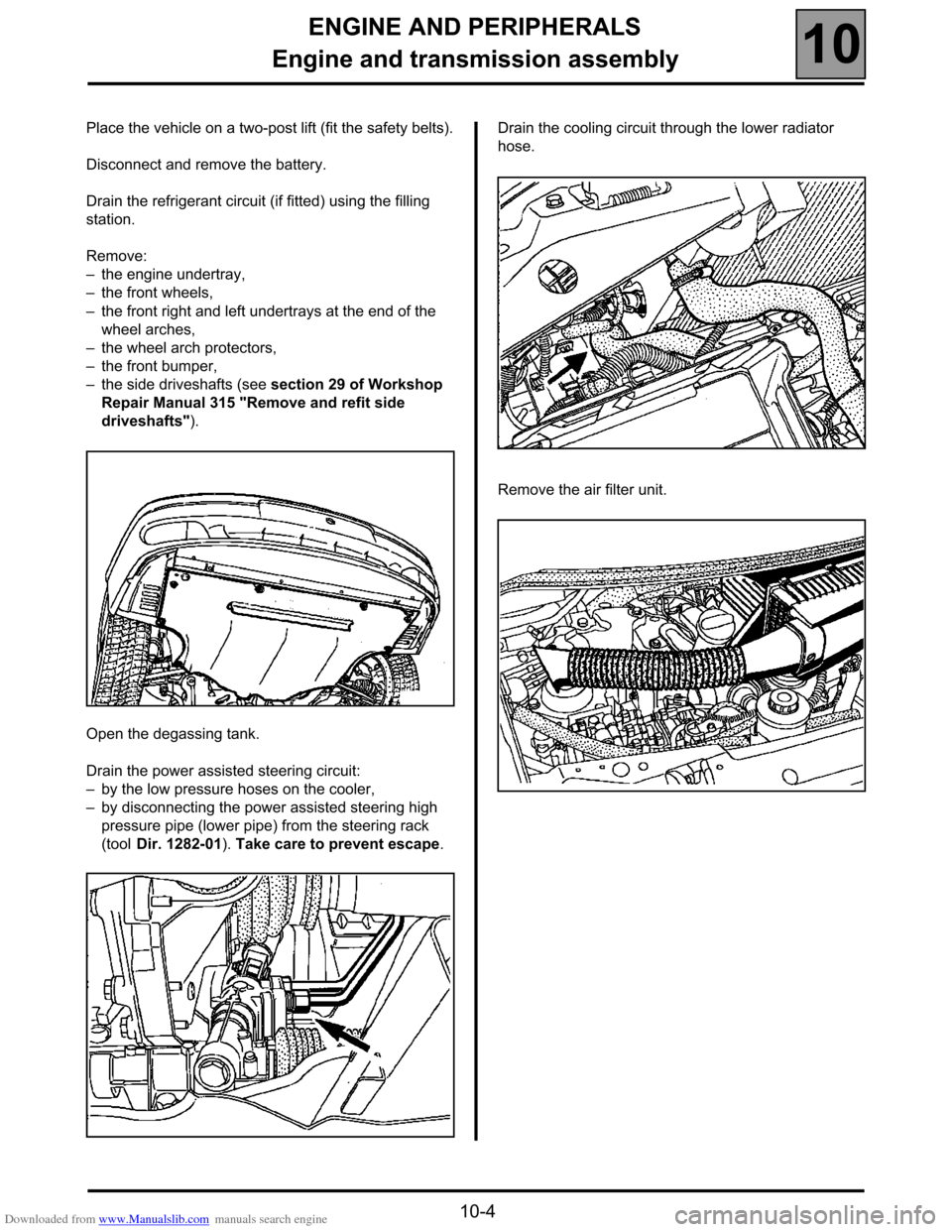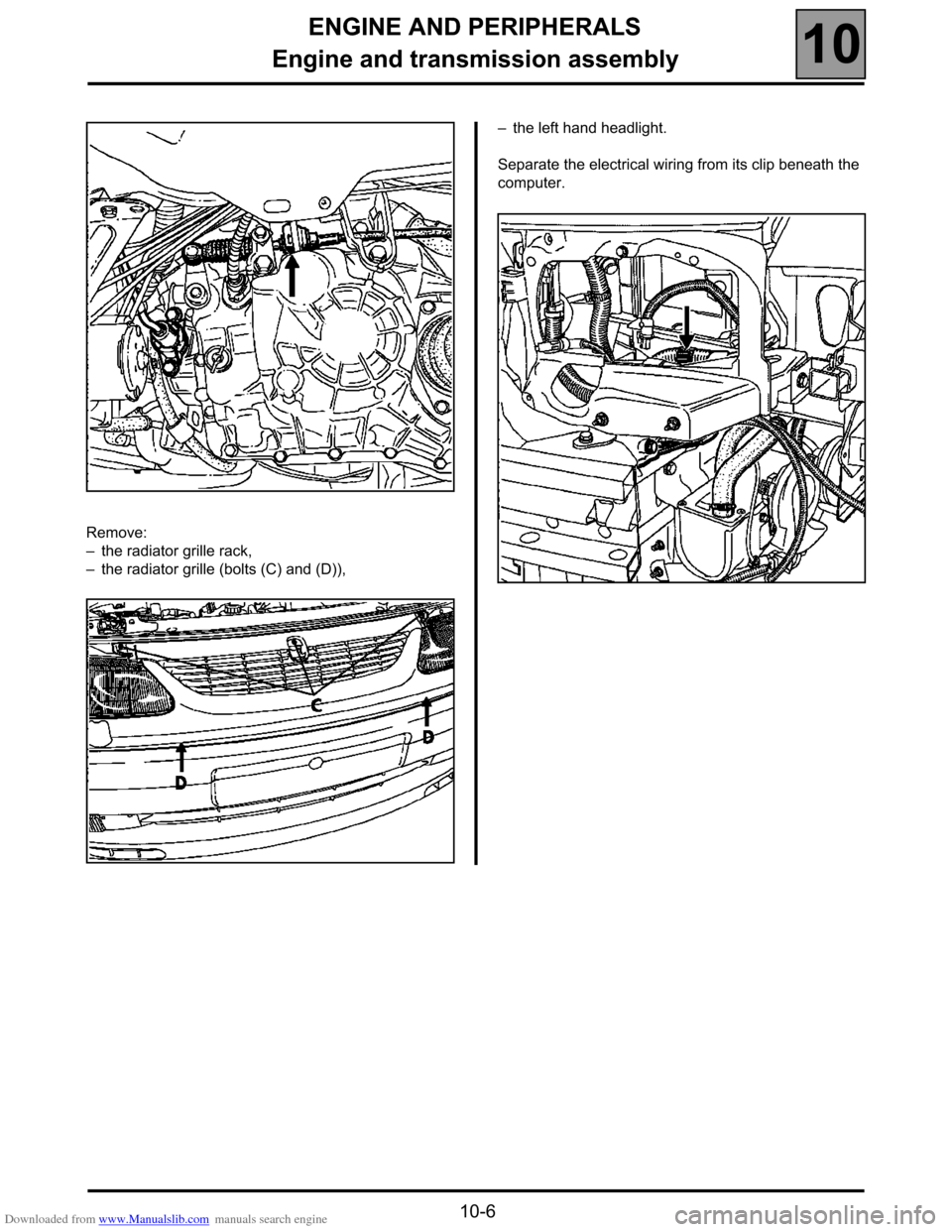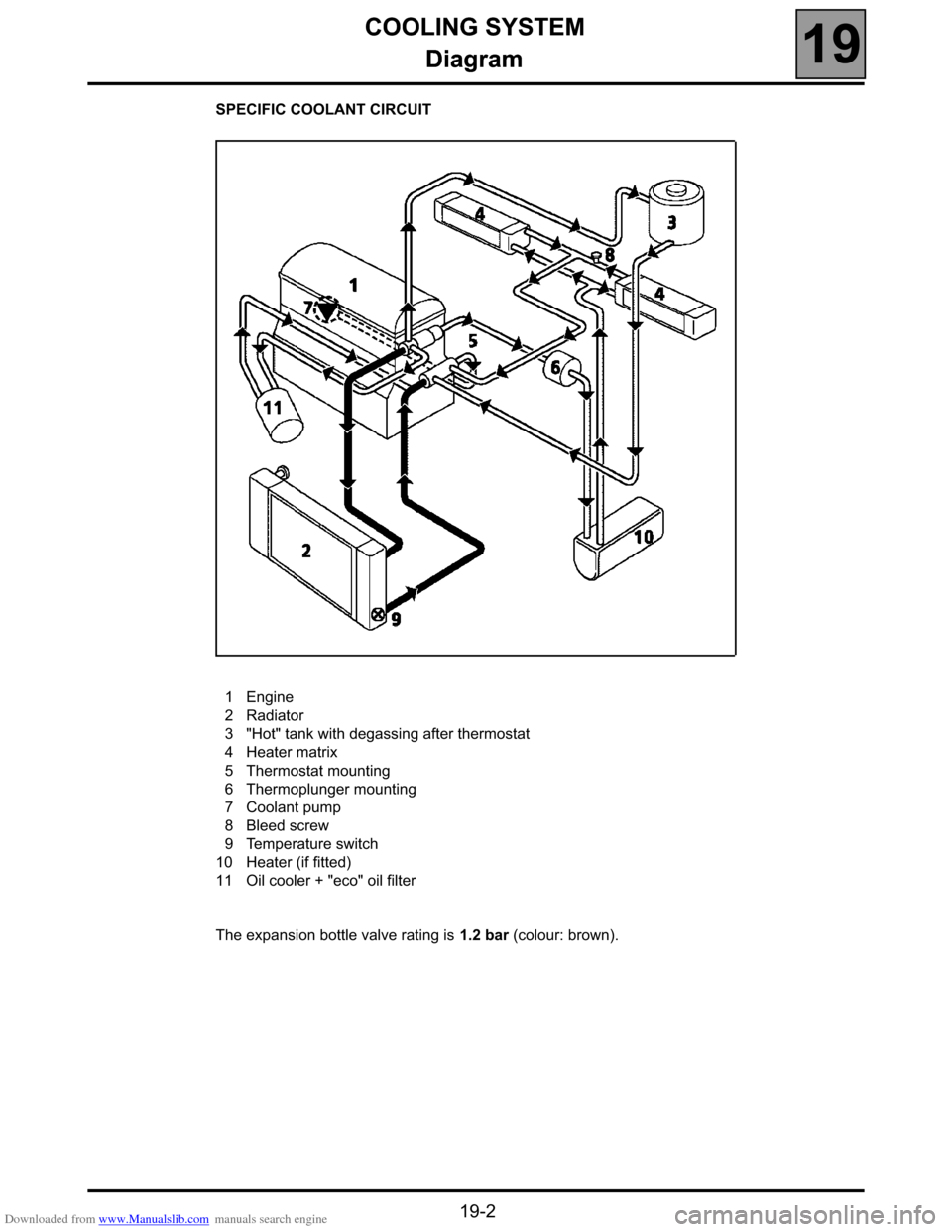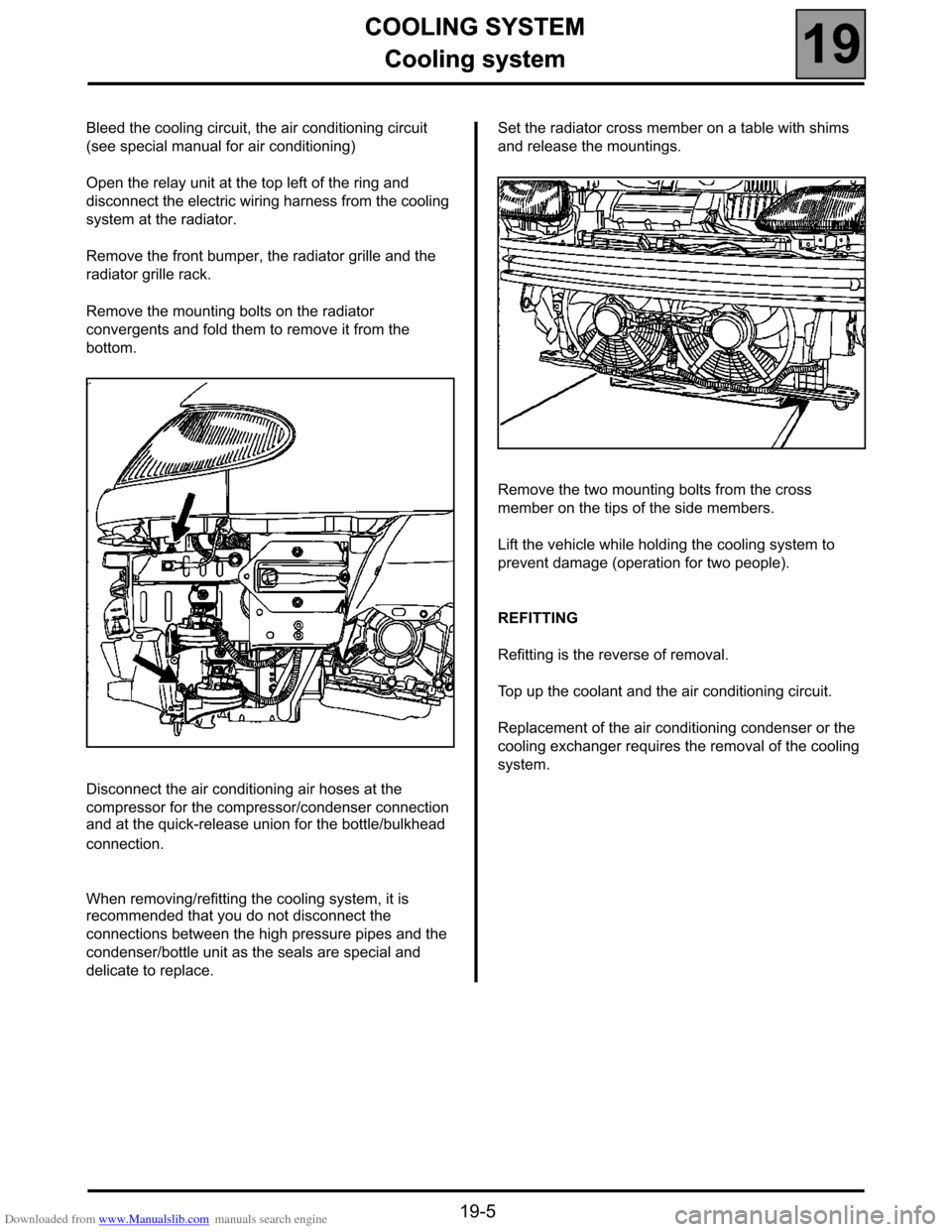radiator RENAULT ESPACE 2000 J66 / 3.G Technical Note 3426A Workshop Manual
[x] Cancel search | Manufacturer: RENAULT, Model Year: 2000, Model line: ESPACE, Model: RENAULT ESPACE 2000 J66 / 3.GPages: 52, PDF Size: 0.98 MB
Page 8 of 52

Downloaded from www.Manualslib.com manuals search engine ENGINE AND PERIPHERALS
Engine and transmission assembly
10
10-4
Place the vehicle on a two-post lift (fit the safety belts).
Disconnect and remove the battery.
Drain the refrigerant circuit (if fitted) using the filling
station.
Remove:
–the engine undertray,
–the front wheels,
–the front right and left undertrays at the end of the
wheel arches,
–the wheel arch protectors,
–the front bumper,
–the side driveshafts (see section 29 of Workshop
Repair Manual 315 "Remove and refit side
driveshafts").
Open the degassing tank.
Drain the power assisted steering circuit:
–by the low pressure hoses on the cooler,
–by disconnecting the power assisted steering high
pressure pipe (lower pipe) from the steering rack
(tool Dir. 1282-01). Take care to prevent escape.Drain the cooling circuit through the lower radiator
hose.
Remove the air filter unit.
Page 10 of 52

Downloaded from www.Manualslib.com manuals search engine ENGINE AND PERIPHERALS
Engine and transmission assembly
10
10-6
Remove:
–the radiator grille rack,
–the radiator grille (bolts (C) and (D)),–the left hand headlight.
Separate the electrical wiring from its clip beneath the
computer.
Page 37 of 52

Downloaded from www.Manualslib.com manuals search engine COOLING SYSTEM
Filling and bleeding
19
119COOLING SYSTEM
Filling and bleeding
There is continuous circulation in the heater matrices.
FILLING
It is essential to open the two bleed screws at the
top of the radiator and the cylinder head coolant
pipe housing outlet.
Fill the circuit through the expansion bottle opening.
Close the bleed screws as soon as the liquid starts to
flow in a continuous stream.
Start the engine (2 500 rpm).
Adjust the level by overflow for a period of about
4 minutes.
Close the bottle.
BLEEDING
Allow the engine to run for about 20 minutes at
2 500 rpm, until the engine fans(s) operate (time
necessary for automatic degassing).
Check the liquid level is at the "Maximum" marker.
DO NOT OPEN THE BLEED SCREWS WHILST THE
ENGINE IS RUNNING.
REFIT THE EXPANSION BOTTLE CAP WHILE THE
ENGINE IS WARM.
19-1
Page 38 of 52

Downloaded from www.Manualslib.com manuals search engine COOLING SYSTEM
Diagram
19
19-2
Diagram
SPECIFIC COOLANT CIRCUIT
1Engine
2Radiator
3"Hot" tank with degassing after thermostat
4Heater matrix
5Thermostat mounting
6Thermoplunger mounting
7Coolant pump
8Bleed screw
9Temperature switch
10 Heater (if fitted)
11 Oil cooler + "eco" oil filter
The expansion bottle valve rating is 1.2 bar (colour: brown).
Page 41 of 52

Downloaded from www.Manualslib.com manuals search engine COOLING SYSTEM
Cooling system
19
19-5
COOLING SYSTEM
Cooling system
Bleed the cooling circuit, the air conditioning circuit
(see special manual for air conditioning)
Open the relay unit at the top left of the ring and
disconnect the electric wiring harness from the cooling
system at the radiator.
Remove the front bumper, the radiator grille and the
radiator grille rack.
Remove the mounting bolts on the radiator
convergents and fold them to remove it from the
bottom.
Disconnect the air conditioning air hoses at the
compressor for the compressor/condenser connection
and at the quick-release union for the bottle/bulkhead
connection.
When removing/refitting the cooling system, it is
recommended that you do not disconnect the
connections between the high pressure pipes and the
condenser/bottle unit as the seals are special and
delicate to replace.Set the radiator cross member on a table with shims
and release the mountings.
Remove the two mounting bolts from the cross
member on the tips of the side members.
Lift the vehicle while holding the cooling system to
prevent damage (operation for two people).
REFITTING
Refitting is the reverse of removal.
Top up the coolant and the air conditioning circuit.
Replacement of the air conditioning condenser or the
cooling exchanger requires the removal of the cooling
system.